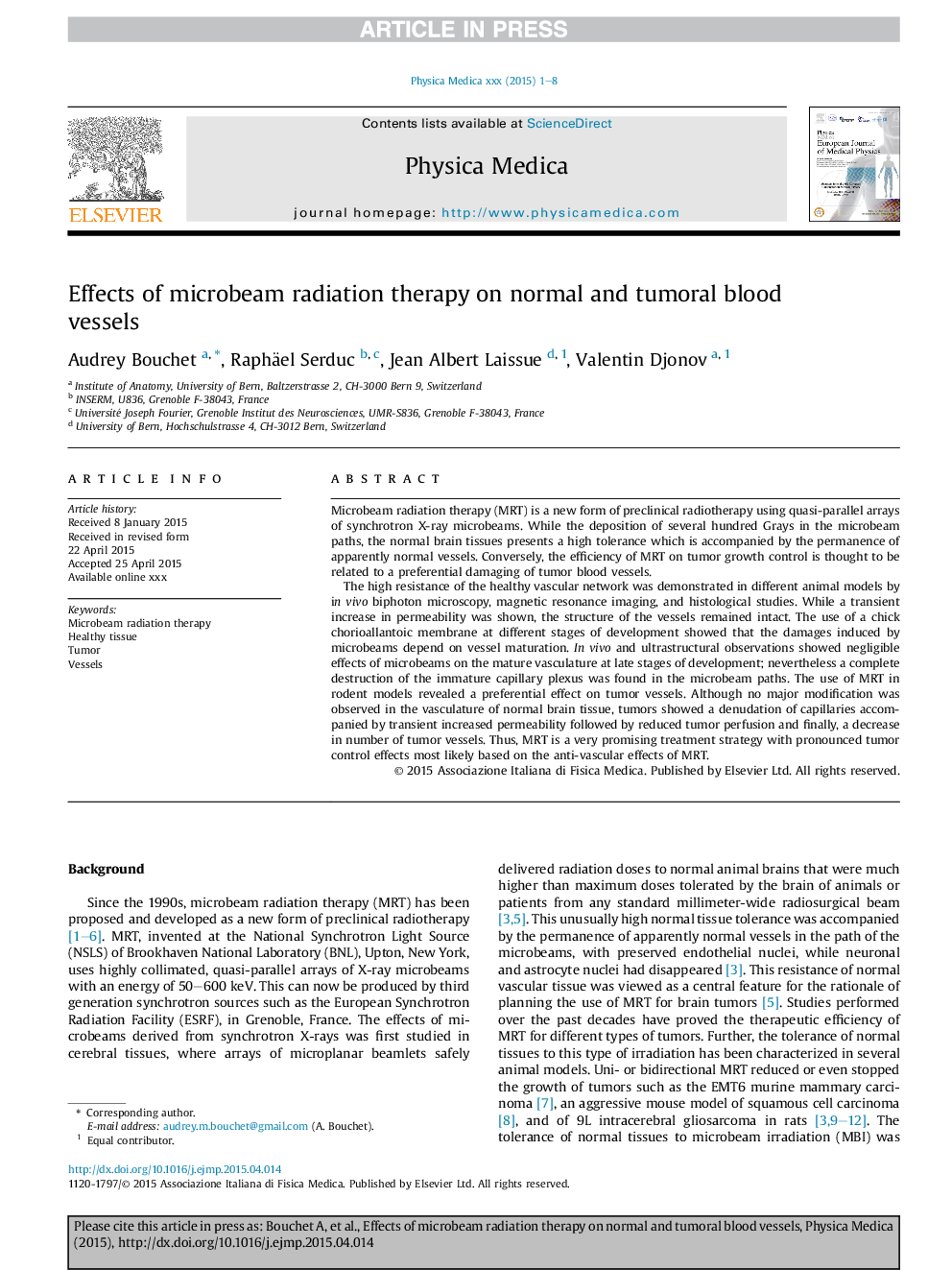| Article ID | Journal | Published Year | Pages | File Type |
|---|---|---|---|---|
| 10731386 | Physica Medica | 2015 | 8 Pages |
Abstract
The high resistance of the healthy vascular network was demonstrated in different animal models by in vivo biphoton microscopy, magnetic resonance imaging, and histological studies. While a transient increase in permeability was shown, the structure of the vessels remained intact. The use of a chick chorioallantoic membrane at different stages of development showed that the damages induced by microbeams depend on vessel maturation. In vivo and ultrastructural observations showed negligible effects of microbeams on the mature vasculature at late stages of development; nevertheless a complete destruction of the immature capillary plexus was found in the microbeam paths. The use of MRT in rodent models revealed a preferential effect on tumor vessels. Although no major modification was observed in the vasculature of normal brain tissue, tumors showed a denudation of capillaries accompanied by transient increased permeability followed by reduced tumor perfusion and finally, a decrease in number of tumor vessels. Thus, MRT is a very promising treatment strategy with pronounced tumor control effects most likely based on the anti-vascular effects of MRT.
Related Topics
Physical Sciences and Engineering
Physics and Astronomy
Radiation
Authors
Audrey Bouchet, Raphäel Serduc, Jean Albert Laissue, Valentin Djonov,
